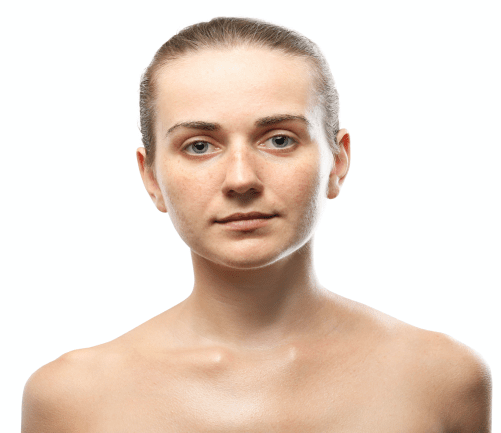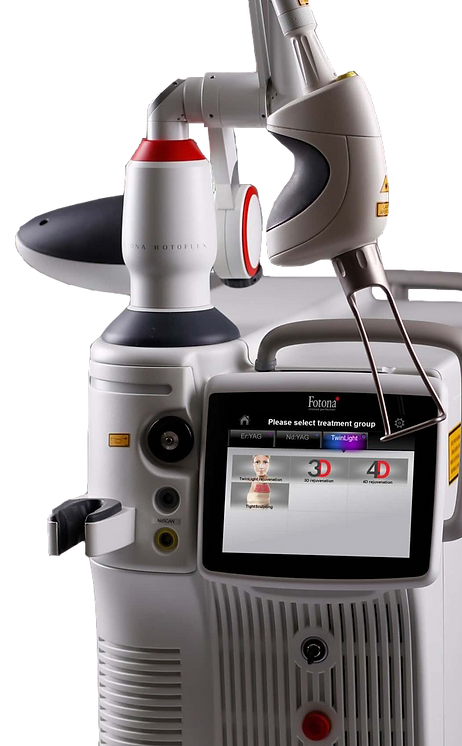Laser Skin Resurfacing in Forest Hills, Queens NYC
Laser resurfacing of the face is an aesthetic procedure during which the laser acts on the upper and middle layers of the skin, contributing to their renewal and elimination of defects. Laser resurfacing will get rid of the first signs of skin aging, scars, acne marks, and hyperpigmentation. After the session, shallow wrinkles disappear, and the relief and skin tone even out. She looks much younger and healthier.
Laser resurfacing of the face is an aesthetic procedure during which the laser acts on the upper and middle layers of the skin, contributing to their renewal and elimination of defects. Laser resurfacing will get rid of the first signs of skin aging, scars, acne marks, and hyperpigmentation. After the session, shallow wrinkles disappear, and the relief and skin tone even out. She looks much younger and healthier.
Laser skin resurfacing is one of the most effective procedures that allow you to achieve visible rejuvenation and eliminate several defects without surgery and the use of fillers.
EFFICIENCY OF LASER FACE RESURFACING
The effectiveness of laser facial resurfacing is noticeable immediately after reducing skin redness and flaking. It fully manifests itself after the healing of the skin. If the patient has deep wrinkles, scars, or other pronounced defects, 2-3 sessions may be required to obtain the desired result.


PLUSES AND MINUSES OF LASER FACE RESURFACING
Like all procedures, laser resurfacing has its pros and cons. The advantages of the procedure are:
- high efficiency – the skin condition improves significantly after the first procedure;
- non-contact – the laser affects the skin at a distance;
- safety – subject to all the rules, the procedure does not cause complications;
- no strict age restrictions;
- affordable cost.
The disadvantages of laser resurfacing can be called a relatively long and painful rehabilitation period – the skin may remain reddened and hurt a little during the week. It may also not be effective enough if the skin is prone to constant rashes and scarring. However, the advantages of the procedure are still greater. It allows you to change the condition of the skin and carry out rejuvenation, which is not provided by other cosmetic procedures except for plastic surgery.
THE EFFECTS OF LASER FACE GRINDING ARE:
- elimination of fine wrinkles and reduction of medium and deep ones;
- elimination of scars and traces of rashes;
- disappearance of age spots;
- alignment of the relief and complexion;
- increase in firmness and elasticity of the skin;
- rejuvenation;
- improvement of the oval of the face and tightening of sagging tissues.
Some estheticians consider deep laser resurfacing a gentle alternative to a surgical facelift. The procedure provides a less pronounced and lasting effect but is safer.


TO WHOM LASER SKIN GRINDING IS CONTRAINDICATED
There are few contraindications to laser resurfacing, and they are all of a general nature.
A session is not recommended for people with epilepsy, cancer, diseases of the immune system, blood, diabetes mellitus, keloidosis, exacerbations of chronic pathologies, skin diseases, inflammation on it, and herpetic rash. In some cases, contraindications are relative, that is, the procedure can be performed after the patient’s condition is normalized.
Laser resurfacing is a safe way to make your skin perfect: rejuvenate, eliminate wrinkles, scars, and pigmentation, and even out the relief and color.


HOW TO CARE FOR THE SKIN AFTER LASER RESURFACING
After laser skin resurfacing, you need to follow certain rules of care:
- 3 days the face can not be wetted with water;
- several times a day, the face should be smeared with creams and ointments prescribed by a beautician;
- until the skin is completely healed, you need to sleep on your back so that your face does not come into contact with the pillow;
- you can not tear off the crusts that form on the face;
- until complete healing, you can not use cosmetics and medicinal products that the doctor did not prescribe;
- no sunbathing for 30 days.
MEET FOTONA SKIN LASER



Faq
HOW THE METHOD WORKS
During the procedure, the laser beam affects the skin cells at the level of the epidermis and dermis. It evaporates moisture in certain cells and, as it were, evaporates them and also warms up the tissues. As a result, the top layer of the skin is removed, and the processes of regeneration and synthesis of collagen and elastin are launched. And tissue heating provides a lifting effect.
When the skin is fully restored, it looks younger and healthier, and existing defects are eliminated.
TYPES OF LASER FACE GRINDING
Depending on the level of exposure to the skin and the depth of penetration of the beam, laser resurfacing is divided into three types:
- laser peeling;
- deep grinding;
- fractional polishing.
Laser peeling involves surface resurfacing of the skin. During the procedure, the beam penetrates to a depth of only 10 microns, or 0.001 mm. Laser peeling is recommended to eliminate small wrinkles, small scars, and soft pigment spots, as well as to even out and improve the tone of the face.
With deep skin resurfacing, the depth of the beam exposure and the degree of skin heating increase. The cosmetologist selects these parameters individually for each patient. Deep grinding is a rather serious procedure. It is carried out to restore skin elasticity and eliminate large age spots and deep wrinkles. In the matter of rejuvenation, this method of laser resurfacing is considered the most effective.
Fractional facial resurfacing is the newest subspecies of this technique. During the session, the laser beam acts on certain skin cells only in the place where it is needed and not on the entire surface of the face. Thus, it is possible to eliminate single defects – wrinkles and age spots. When exposed to them, nearby cells do not suffer, due to which the rehabilitation period is reduced. Fractional skin resurfacing is used to eliminate post-acne, small stretch marks, scars, and fine wrinkles. Sometimes it is carried out in combination with laser peeling.
INDICATIONS FOR LASER FACE RESURFACING
Laser skin resurfacing is performed for aesthetic purposes. Indications for its implementation are:
facial wrinkles;
skin hyperpigmentation, age spots;
scars, small scars, stretch marks, post-acne;
wide pores;
uneven relief, skin tone;
weakening of turgor (tension) of the skin, flabbiness of the skin.
Laser skin resurfacing is mainly used to eliminate age-related changes and skin defects such as hyperpigmentation and scars.
Laser resurfacing of the face has practically no age restrictions. It can be performed by men and women over 18 years of age. However, for most patients, it is advisable to use it after 25-35 years (when age-related changes appear) or in the presence of pronounced skin defects.
Before polishing, the patient is always consulted by a beautician. He evaluates the condition of the skin and determines which technique can be used to achieve the desired effects by the patient.
HOW TO PREPARE FOR A LASER FACE RESURFACING
You need to start preparing for the procedure 2 weeks in advance. Before this, it is advisable to consult with a cosmetologist and clarify all questions with him.
2 weeks before the procedure, you can not sunbathe and visit the solarium, as well as use peels and skin scrubs.
A week before the procedure, you may need to stop taking certain medications (mainly affecting blood clotting). During the preliminary consultation, you need to tell the beautician what medications you are taking and whether you have any chronic diseases.
It should also be taken into account that the rehabilitation period after laser resurfacing can reach from 3 to 6 weeks.
To prepare psychologically for the procedure, you can ask your beautician to show photos of patients after the procedure.
HOW IS THE PROCEDURE FOR LASER FACE RESURFACING
Laser resurfacing of the face takes from 10 to 60 minutes. During the procedure, the patient lies down or sits down, puts on glasses to protect the eyes from the laser glow, and the cosmetologist gradually treats the entire face or a specific area with the beam.
Laser peeling is performed without anesthesia, and before deep resurfacing, a special cream with an anesthetic is applied to the face.
Deep grinding is performed in several stages. First, the cosmetologist processes the entire face with a laser, bypassing the area around the eyes and lips. Then he wipes the skin with chlorhexidine to cleanse dead cells, after which he repeats the procedure. This may cause a tingling sensation. To reduce pain, a stream of cold air is supplied to the skin in parallel with the laser.
HOW LONG DOES THE REHABILITATION TAKE AFTER LASER FACE RESURFACING?
The duration of the rehabilitation period depends on the type of procedure. After laser peeling, the skin looks reddened for several days. After about 3 days, it begins to peel off, and after a week it looks already renewed.
After fractional resurfacing, the recovery period for the skin is 7-9 days, but it heals completely within a few weeks.
After deep peeling, the face remains strongly reddened for 5 days. Later, a thin crust forms on the skin, and the face begins to peel off. After 7-10 days, the peeling disappears. After the skin is completely healed, the face looks rejuvenated, and the skin is supple and toned. Full recovery of the skin takes an average of 4-6 weeks.
Due to such consequences of the procedure, some patients oppose its repetition, although laser resurfacing provides a pronounced result.